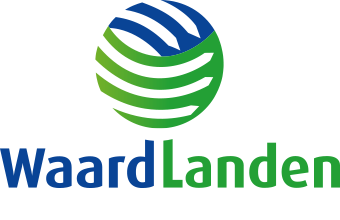Together for a waste-free and clean municipality. This is the title of the new waste and raw materials policy plan of the municipalities of Gorinchem, Hardinxveld-Giessendam, Molenlanden and Vijfheerenlanden and Waardlanden. With various measures, taken in three steps, the mayor and aldermen of the municipalities aim to reduce the amount of residual waste to no more than 100 kilograms per inhabitant in 2025. This is necessary because the national government has tightened the targets for waste separation and because the municipalities need to keep the costs of residual waste affordable. The colleges will submit this proposal to the municipal councils.
Trend break necessary
"In our municipalities, each resident will have an average of 232 kilos of residual waste annually by 2020. This is still far from the national target of no more than 100 kilos," says Hans van den Brule, director of Waardlanden. "70% of that 232 kilos of residual waste consists of reusable materials. That's 162 kilos of raw materials. If these are separated and recycled, we will have much less residual waste and therefore lower costs to have that waste incinerated. In fact, the introduction by the state of the incineration tax makes incinerating residual waste increasingly expensive. To bring the goal within reach, a trend break is necessary. This is why the municipalities and Waardlanden are renewing the policy." The focus is on separate collection of reusable waste - raw materials - and increased recycling. To prevent avoidance behaviour, considerable efforts are being made on communication and enforcement. Hans van den Brule: "A maximum of 100 kilos of residual waste is achievable, municipalities around us also show this."
From 232 to 100 kilograms of residual waste in three steps by 2025
In the policy document, the municipalities and Waardlanden propose three steps to reduce residual waste from 232 to 100 kilograms by 2025 and make our region more circular. Together, the three steps form the route to more waste separation and therefore less residual waste and an affordable waste disposal levy. Hans van den Brule: "Step 1 is to improve the collection of raw materials. There will be extra containers for paper, packaging glass and textiles. And we will start collecting VGF waste again from high-rise buildings. Residents will also receive free kitchen buckets so they can separate fruit and vegetable waste and food leftovers easily. Furthermore, we will provide more information on how to separate your waste. We will continue quality inspections and, if necessary, enforcement on proper and clean waste and raw materials separation. The environment centres will be redesigned, this way we encourage and facilitate extending the life of goods." Step 2 is to close the neighbourhood containers for residual waste. "Residents of the Waardlanden municipalities will receive a pass that allows them to open the containers to put residual waste in. These containers will then only be accessible to our residents. The passes also provide access to the waste recycling centres. With this second step, we ward off waste tourism." The third step is to reward waste separation. Hans van den Brule explains: "Part of the waste charges we make variable. The better you separate your waste, the less often you have to present residual waste, the less waste charges you pay. Rates will also be introduced for bulky household waste, rubble, wood and bulky garden waste, and the 'polluter pays' principle will apply. In this way, every resident can keep costs as low as possible themselves."
Support for measures among residents
The colleges of mayors and aldermen of the four municipalities adopted the new raw materials policy 'Together for a waste-free and clean municipality, 2021 - 2025' in late March and early April. Residents, municipal councils and chain partners were intensively involved in the creation of the new policy. After consulting them, measures were formulated to achieve the targets. Early this year, we asked residents what they thought of the proposed measures. This showed great support.
More information can be found on the New raw materials policy page.






